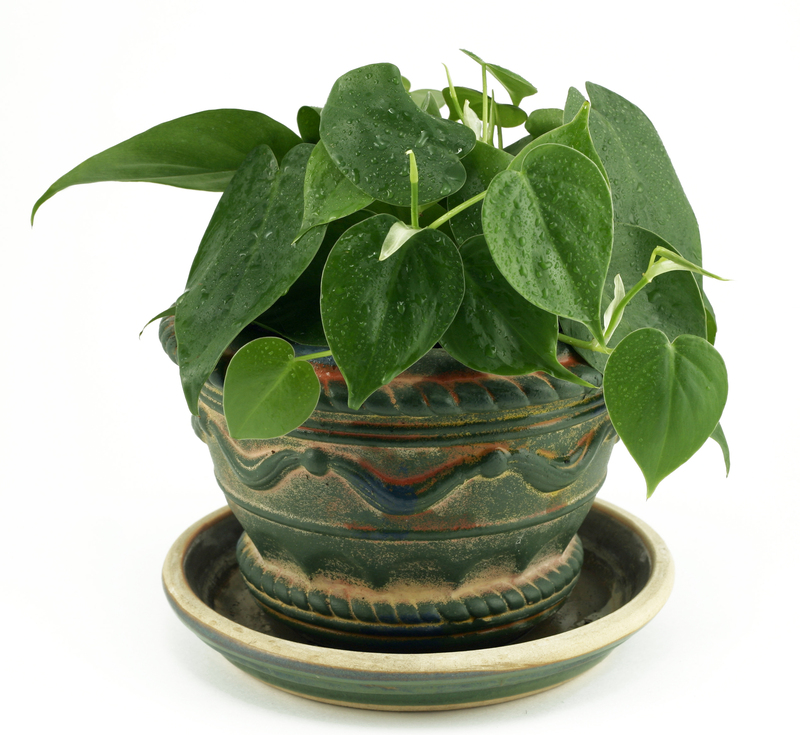Safeguarding Plant Life from Harsh Weather Effects
Posted on 28/08/2025
Safeguarding Plant Life from Harsh Weather Effects: A Comprehensive Guide
Plants are the foundation of our ecosystems, providing food, oxygen, and aesthetic value. However, plant life is continually exposed to a variety of environmental challenges, with harsh weather effects among the most threatening. From scorching heat waves and extended droughts to unexpected frosts, storms, and flooding, these weather extremes can devastate gardens, landscapes, and agricultural crops.
Protecting vegetation requires knowledge, preparation, and ongoing effort. This guide will explore multiple strategies and best practices for safeguarding plant life from harsh climate and weather impacts. Whether you're a home gardener, a farmer, or simply a nature enthusiast, the information here will empower you to create resilient plant environments throughout the seasons.
Understanding the Impact of Extreme Weather on Plants
Before developing protective measures, it's crucial to understand how different types of extreme weather compromise plant health and survival:
- Heat Waves: Cause dehydration, sunburn, wilting, and can accelerate lifecycle changes, sometimes causing premature flowering or fruiting.
- Frost and Snow: Freeze plant tissue, disrupt metabolic processes, and damage roots, buds, and branches.
- Heavy Rains and Floods: Create waterlogged soil, suffocating roots, promoting fungal diseases, and leading to root rot.
- High Winds: Break stems and branches, shred leaves, and dry plants quickly through increased transpiration.
- Drought: Limits water availability, causing reduced growth, leaf drop, and even death if prolonged.
Safeguarding plant life from these weather challenges involves a combination of smart planning, choosing resilient plants, and adopting tactical interventions.

Strategies for Protecting Plants Against Severe Weather
1. Selecting Weather-Resistant Plant Varieties
The foundation of weather resilience in the garden starts with choosing the right species and cultivars. Many plants offer natural resistance to particular weather extremes.
- Drought-tolerant plants such as lavender, succulents, and native grasses thrive even during water scarcity.
- Varieties with cold-hardiness withstand freezing temperatures, including certain evergreens, conifers, and alpine perennials.
- Flood-resistant species like willows, bald cypress, and certain types of ferns can tolerate waterlogged conditions.
Whenever possible, match plant selection to your region's climate and prevailing weather patterns. Consult local nurseries or extension services for guidance on strong, weather-adapted varieties.
2. Building Soil Health for Plant Resilience
The health of your soil directly influences your plants' ability to withstand harsh weather events.
- Enrich soil with organic matter -- compost, manure, and leaf mold retain water during droughts and improve drainage during floods.
- Maintain proper soil structure to avoid compaction, which can inhibit root growth and water infiltration.
- Mulching regulates soil temperatures, minimizes water evaporation, and protects roots from sudden temperature shifts and erosion.
Healthy soil acts as both a sponge and insulator, helping plants survive heat, cold, and excess moisture.
3. Smart Irrigation & Water Management
Water management is a vital part of safeguarding plant life from extreme weather:
- Water plants early in the morning to reduce evaporation and prepare them for daily heat.
- Install drip irrigation systems for efficient, deep watering, minimizing runoff and disease risk.
- Harvest rainwater using barrels or cisterns to provide a sustainable water source during dry spells.
- Avoid overwatering, especially before storms or heavy rain, as saturated soil can deprive roots of oxygen.
Smart irrigation keeps plants hydrated in drought and prevents waterlogging when rain is excessive.
4. Physical Barriers and Plant Protection Structures
Physical shields are essential in the battle against harsh weather phenomena. Consider the following options:
- Row covers and horticultural fleece protect crops from frost, chilly winds, and even insect pests.
- Cold frames and greenhouses buffer temperature extremes, providing a safer microclimate for sensitive plants all year round.
- Windbreaks, such as fences, hedges, or specially planted rows of trees, reduce wind speed, limit soil erosion, and protect delicate vegetation.
- Shade cloth and pergolas safeguard plants from harsh sunlight, reducing transpiration and leaf burn.
- Mulching and ground covers serve as living blankets for the soil, guarding it against heat and temperature swings.
By implementing physical barriers, you create a buffer zone against many damaging weather events.
5. Pruning, Staking, and Support
Proper maintenance prepares plant life to withstand storms and strong winds:
- Prune dead or weak branches to reduce breakage risk during storms or under snow load.
- Stake young trees and top-heavy plants to prevent uprooting or snapping in winds.
- Train vines and climbers onto sturdy supports to avoid damage from gusts.
This preventative care is crucial for reducing plant losses and ensuring rapid recovery from weather damage.
6. Weather Monitoring and Timely Action
Being proactive rather than reactive is paramount. Today, a wide range of weather apps and online alert systems empower gardeners and farmers to:
- Track incoming storms, frost warnings, or heatwaves.
- Plan protective actions such as covering plants, moving potted specimens indoors, or adjusting irrigation.
- Prune or harvest crops before anticipated weather extremes.
Immediate response can mean the difference between survival and devastation for your plants.
Special Techniques for Weather-Specific Plant Protection
Shielding Plants from Extreme Heat and Sun
- Install shade cloth (usually 30-50% shade), especially for newly planted or tender species.
- Water deeply and less frequently, encouraging deep roots that can access moisture longer.
- Mulch heavily to minimize soil evaporation.
- Avoid fertilizing during heatwaves, as this can stress plants and burn roots.
- Group sensitive containers in the shade or move them indoors during peak heat hours.
Protecting Against Frost, Freeze, and Snow
- Cover vulnerable plants with row covers, cloches, or old blankets before sunset on expected freeze nights.
- Water soil a day prior -- moist soil retains heat better than dry soil, stabilizing air temperature at ground level.
- Insulate young trees or shrubs by wrapping trunks with horticultural fleece or burlap.
- Avoid pruning late in the season - lush growth is more susceptible to frost.
- Shake heavy snow off branches gently to prevent breakage.
Dealing with Heavy Rain and Flooding
- Plant on mounds or raised beds to increase drainage.
- Choose permeable ground covers (like wood chips or gravel) to prevent water pooling.
- Direct runoff away from vulnerable plantings with trenches or French drains.
- After flooding, remove mulch to facilitate soil drying and check for signs of root rot.
- Select plants adapted to wet conditions for low-lying areas.
Defending Against Strong Winds and Storms
- Install windbreaks or temporary barriers on exposed sites.
- Secure outdoor pots and containers; group them together for stability.
- Stake or cage tall plants and vegetables (such as tomatoes and beans).
- Keep tree canopies thinned with regular pruning to minimize wind resistance.
- Repair or replace broken supports and trellises promptly after storms.
Long-Term Planning for Weather-Resilient Landscapes
Adapting your yard or farm business for the climate of the future is essential for ongoing safeguarding of plant life from harsh weather. Here are principles to prioritize:
Embrace Native and Adaptive Plants
Native plants have evolved to fit your region's weather, soil, and pest pressures. Mixing natives with well-researched exotics that can withstand your climate offers the highest resilience with minimal inputs.
Design with Microclimates
Observe your site for warm, cool, dry, or wind-shaded areas, and match plant choices accordingly. For example:
- Use the south side of buildings for tender perennials that need more warmth.
- Place wind-sensitive plants behind hedges or walls.
- Utilize slopes and raised beds for improved drainage.
Promote Biodiversity
A diverse landscape is naturally less vulnerable to weather swings. Interplant different species and use companion planting to buffer against disease and pest outbreaks, which intensify after weather stress.
Plan for Water Collection and Conservation
Install irrigation systems that adjust for rainfall and drought, and create rain gardens or swales to collect excess water where needed.
Signs of Weather Stress and First Aid for Plants
Even with careful planning, some weather damage to plants is unavoidable. Early detection and rapid response can make a significant difference:
- Wilting or leaf scorch: Increase watering, shade stressed plants, and trim damaged leaves.
- Root rot (yellow, limp leaves): Improve drainage, remove most of the mulch, and allow soil to dry, then treat with fungicide if needed.
- Frosted leaves or stems: Do not prune immediately; let the damage thaw and assess. Prune dead material only after new growth emerges.
- Broken limbs: Trim back cleanly to healthy tissue and support remaining branches or stems.
- Windburn: Remove severely damaged foliage and provide windbreaks until recovery.

The Role of Technology and Innovation in Plant Protection
As weather events become more unpredictable, modern technology is increasingly vital in safeguarding our plant life:
- Climate-smart apps offer real-time alerts and suggested actions for weather events.
- Smart irrigation controllers automatically adjust watering to match rainfall and moisture changes.
- Disease forecaster tools use local weather data to predict fungal or pest outbreaks after extreme conditions.
- Weather-hardened greenhouses and row covers designed for commercial growers are now accessible to home gardeners.
By integrating traditional gardening wisdom with emerging innovations, everyone can play a part in mitigating the effects of harsh weather on plant health.
Conclusion: Plant Stewardship in a Changing World
With the world's weather patterns shifting more dramatically each year, protecting and safeguarding plant life from harsh weather effects is both an immediate necessity and a long-term commitment. By understanding the risks, becoming proactive in habitat and plant management, and embracing technology and community knowledge, we can sustain lush landscapes, bountiful gardens, and resilient food systems for generations to come.
Remember: Every step you take--whether mulching a vegetable bed, installing a windbreak, or choosing an adaptive plant--contributes to a climate-resilient tomorrow. Together, we can protect our green companions and the vital role they play on our planet.

